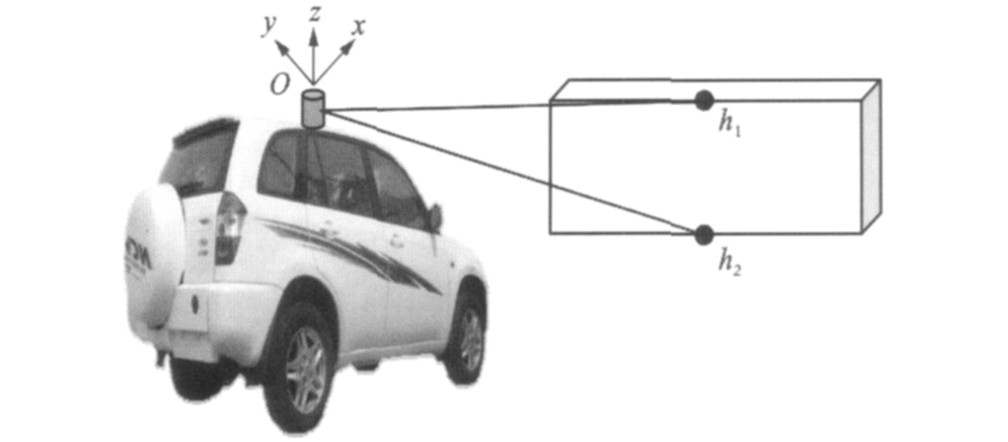| [1] |
游峰. 智能车辆自动换道与自动超车控制方法的研究[D]. 长春: 吉林大学, 2005.YOUFeng. Study on autonomouslane changing and autonomous overtaking control method of intelligent vehicle[D]. Changchun: Jilin University, 2005. (in Chinese)
|
| [2] |
沈中杰, 王武宏, 侯福国, 等. 智能交通信息网络环境下数字驾驶系统的体系结构与关键技术[J]. 交通运输工程学报, 2002, 2 (1): 96-100. http://transport.chd.edu.cn/article/id/200201021SHEN Zhong-jie, WANG Wu-hong, HOU Fu-guo, et al. Architecture and key techniques of digital driving system with in intelligent transport information network environment[J]. Journal of Traffic and Transportation Engineering, 2002, 2 (1): 96-100. (in Chinese) http://transport.chd.edu.cn/article/id/200201021
|
| [3] |
FLETCHER L, TELLERS, OLSONE, et al. The mit-cornellcollision and why it happened[J]. Journal of Field Robotics, 2008, 25 (10): 775-807. doi: 10.1002/rob.20266
|
| [4] |
MCBRIDE J R, I VANJ C, RHODE D S, et al. A perspec-tive on emerging automotive safety applications, derived from lessons learned through participation in the DARPA grandchallenges[J]. Journal of Field Robotics, 2008, 25 (10): 808-840. doi: 10.1002/rob.20264
|
| [5] |
PATZ B J, PAPELIS Y, PILLAT R, et al. A practical approach to robotic design for the DARPA urban challenge[J]. Journal of Field Robotics, 2008, 25 (8): 528-566. doi: 10.1002/rob.20251
|
| [6] |
URMSON C, ANHALT J, BAGNELL D, et al. Autono-mous driving in urban environments: boss and the urban challenge[J]. Journal of Field Robotics, 2008, 25 (8): 425-466. doi: 10.1002/rob.20255
|
| [7] |
SUKRJ K, JUNG H G, BAE K, et al. Outlier rejection for cameras on intelligent vehicle[J]. Pattern Recognition Letters, 2008, 29 (6): 828-840. doi: 10.1016/j.patrec.2007.11.019
|
| [8] |
ORDONEZ C, COLLI NS JR E G, SELEKWA M F, et al. The virtual wall approach to li mit cycle avoidance forunmanned ground vehicle[J]. Robotics and AutonomousSystems, 2008, 56 (8): 645-657.
|
| [9] |
THRUN S, MONTEMERLO M, DAHLKAMP H, et al. Stanley: the robot that won the DARPA grand challenge[J]. Journal of Field Robotics, 2006, 23 (9): 661-692. doi: 10.1002/rob.20147
|
| [10] |
KASTRI NAKI V, ZERVAKIS M, KALAITZAKIS K. Asurvey of video processing techniques for traffic applications[J]. I mage and Vision Computing, 2003, 21 (4): 359-381.
|
| [11] |
HORI UCHI S, OKADA K, NOHTOMI S. I mprovement ofvehicle handling by nonlinear integrated control of four wheelsteering and four wheel torque[J]. JSAE Review, 1999, 20 (4): 459-464. doi: 10.1016/S0389-4304(99)00051-X
|
| [12] |
高韬, 刘正光, 岳士宏, 等. 用于智能交通的运动车辆跟踪算法[J]. 中国公路学报, 2010, 23 (3): 89-94. https://www.cnki.com.cn/Article/CJFDTOTAL-ZGGL201003015.htmGAO Tao, LI UZheng-guang, YUE Shi-hong, et al. Movingvehicle tracking algorithm used for intelligent traffic[J]. China Journal of Highway and Transport, 2010, 23 (3): 89-94. (in Chinese) https://www.cnki.com.cn/Article/CJFDTOTAL-ZGGL201003015.htm
|
| [13] |
郑建霞. 红外线编码扫描式智能车辆分类计数器[J]. 长安大学学报: 自然科学版, 2003, 23 (3): 85-87. https://www.cnki.com.cn/Article/CJFDTOTAL-XAGL200303024.htmZHENG Jian-xia. Infra-red intelligent vehicle classification counter[J]. Journal of Chang an University: Natural ScienceEdition, 2003, 23 (3): 85-87. (in Chinese) https://www.cnki.com.cn/Article/CJFDTOTAL-XAGL200303024.htm
|





 下载:
下载:







